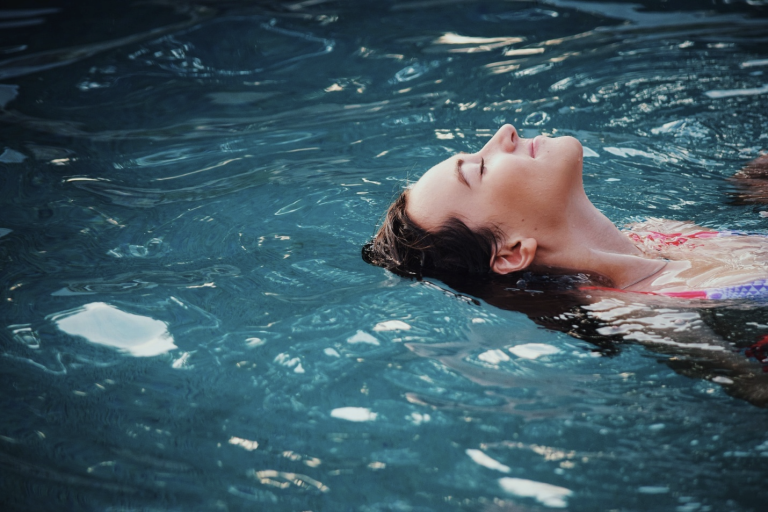Owning an above-ground pool does not come without its hurdles. Owners need to be very careful and timely when it comes to its maintenance. One of the most important considerations regarding maintaining a pool throughout the season is winterization.
Keeping an above-ground pool requires careful consideration of the changing seasons and how they can impact the pool. Fortunately, you can easily winterize your pool using just a few simple steps.
Step 1 – Gather Pool Winterizing Supplies
This step requires you to gather all of your winterizing supplies. These supplies can include:
- PH Increaser
- Alkalinity Increaser
- Pool shock
- Calcium Hardness Increaser
- Clarifying Winter Enzyme Supplement
- Algaecide
It can also include some cold climate supplies such as protective eyewear, gloves, simmer cover, plugs, pool cover, clips, pool air pillow, and water bags. These may seem like plenty of supplies, but they can help winterize a pool in the best way possible.
Step 2 – Clean your Pool
This is the first step and the most important one. Before winterizing the pool, it is essential to conduct a thorough and precise pool cleaning. It is best to clean your pool with a vacuum and pool cleaner. Cleaning the pool filter is also another important step included in the pool winterization process.
After going through a pool cleanup, pool owners should finish the step by checking the PH of the water, making sure that it stays between 7.4 and 7.6. Alkalinity between 100 to 150 PPM is ideal. Above-ground pool owners also have to adjust the calcium hardness level, ensuring that it stays between 175 to 225 PPM.
Step 3 – Addition of Winterizing Chemicals
If you are using a winterizing kit, this step becomes a lot easier. One has to simply follow the directions on the label. However, proceeding with this step without the winterizing kit at hand requires the addition of each chemical one after another. When trying to do this, adhering to the correct order is critical.
The first step involves balancing the alkalinity of the water, along with the PH and calcium hardness. After which, pool owners have to add sanitizer. Once the water in the above-ground pool is balanced, pool owners have to resort to algae prevention.
This involves pool shock. Before using pool shock, it is critical to put on protective eyewear and gloves. Safety is critical, and this goes for all pool chemicals, especially when applying algaecide. This chemical works well just before closing the pool as it helps prevent any algae from forming while the water is covered. Another thing to add before closing the pool cover includes a clarifying enzyme treatment.
Step 4 – Don’t Let the Plumbing Freeze
One of the key steps of winterizing an above-ground pool is to keep the plumbing from freezing. To keep that from happening, remove the hoses from the pool’s pump and filter. If possible, it is recommended to store the pump filter hoses and other filter equipment in a warm and dry place throughout the winter unless you wish to spend on the replacement of heat lamps.
When the pump and filter are cumbersome and heavy, make sure to remove drain plugs to prevent ice buildup inside the units. This can lead them to crack. It is best to store the drain plugs right in the pump housing with the basket so that you know where they are after opening the pool this coming spring.
Step 5 – Remove Pool Accessories
Before covering the pool lid and leaving the pool to sit throughout the season, it is important for people to not forget about pool accessories. In other words, it is important not to forget about the pool accessories such as the ladder or any pool toys. Removing such accessories from the pool is an essential step in winterizing the pool.
Step 6 – Filter Care
This step applies to users that have a sand filter. If they have a sand filter, they need to set the multiport valve to winterize. A multiport valve can either have a sight glass or a bleeder valve. In this instance, they have to remove them as well and store them in the pump basket along with the drain plugs. In the instance of a DE filter, it is best to drain it, rinse the grids with a hose to remove excess DE powder, and then leave them open.
Step 7 – Cover Your Pool
The last step of winterizing the pool is covering it. Before one proceeds with this step, one can also use a pool pillow. Simply cover the pool, and secure it with a cable and winch. Securing the cover is also possible with the help of clips and cable. It also helps prevent the lawn from getting dirty.
Final Thoughts
Winterizing an above-ground pool requires users to follow the above-mentioned step-by-step process. The order of the steps may vary depending on the type of above-ground pool one has. Before winterizing, users must learn how to maintain a pool.

